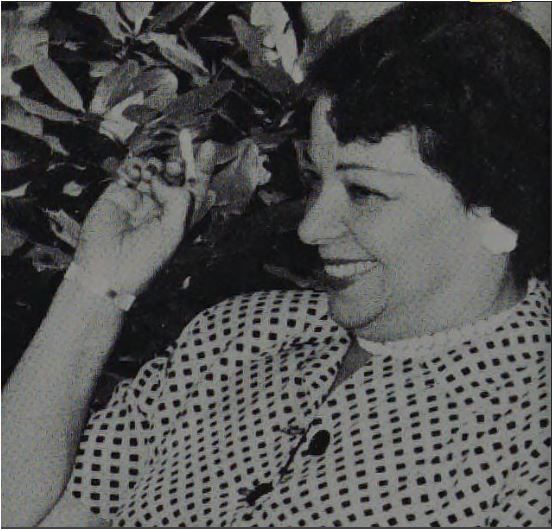In the buzzing arteries of early-to-mid 20th century New York, a city pulsing with the birth of skyscrapers and jazz, there existed an intriguing woman named Lauretta Giegerman. Imagine placing a rose in a gritty urban scene — that’s Lauretta, a showgirl turned wife of notorious mobster Frank Costello. While Costello danced with danger and infamy in organized crime circles, Lauretta carved out a quiet existence, preferring stage lights and solace to gunfire and gold. Would you expect anything less from a former Broadway bright light?
Early Life and Background
Born in 1894 in New York County, Lauretta Giegerman entered the world just before the turn of a century that would redefine urban life. There’s charm in her name — it varied in historical accounts, a reflection perhaps of the city’s own changing façade. This was an America where ambitions ran as high as the buildings that pierced its sky, and Lauretta, known also as Loretta Geigerman, was no stranger to dreams meant for greatness. It’s a background that suggests she learned to navigate life with the grace of a performer — a skill that serves one well, whether on stage beneath the spotlight or in a world shadowed by crime.
Career as a Showgirl
Lauretta’s path to fame flickered to life as a showgirl, an endeavor that allowed her to dazzle audiences, capturing magic with the swish of a feathered costume. Nicknamed “Bobby,” her story unfolded on the stages elevated above the clamor of breadlines and rumbling trolleys. The entertainment era of theatre and cabarets was booming — by one count, the first motion picture theaters were appearing. It’s not hard to envision Lauretta captivating audiences, her nickname spoken with affection in the theater hallways. “Bobby” became a bridge between her dual lifelines — a stage name that shimmered with charm, glancing off New York’s ironic juxtaposition of prohibition speakeasies and vaudevillian opulence.
Marriage to Frank Costello
The curtains shifted when Lauretta met Frank Costello, a man who commanded not orchestras but the silence of fear and respect in the world of organized crime. She married him and stayed by his side for a substantial span of 35 years. These were years not gilded in glamour but more in muted tones of routine and ritual comfort. Together, they lived in a seven-room apartment on Central Park West — less opulent than one might expect, given Costello’s stature, but richly adorned with the simple love they shared. Their summer base was Sands Point, New York — a nod to Gatsby-esque seclusion, perhaps, without the reckless parties. Together they mapped a life of rarefied quiet — strange, amid the storm of crime syndicates that swirled around them.
Life Away from the Spotlight
The couple led an unusually restrained existence. With no children to romp through the halls, theirs was a connection uncluttered by offspring—a decision that set them apart in a culture where family lineage meant more than entertainment. Lauretta and Frank constructed a familial unit insulated from noise, creating a space where solitude spoke louder than the gangland echoes that reverberated beyond their doorstep. Their life was one where ambition didn’t breed expansion but instead cemented the core of their personal empire.
Avoidance of Publicity
Avoiding the limelight became artful for Lauretta — she let the camera lenses focus on spectacular feed elsewhere while she maintained an enigmatic profile. Though married to the underworld’s empire-builder, she shunned the attention typically sought by consorts of power. Her public appearances were few, with the exception of her visit to Roosevelt Hospital in May 1957 after a bullet found its way toward Costello — a rare, though short-lived, brush with publicity. Her life was her own sufficiently, independent of Frank’s shadow — a whisper in the annals of mob history rather than a trumpet.
Household Management
Their stately home life was handled with discreet precision. They employed a long-term maid, a testament to a traditional set-up that spoke more of old-world calm than mob-world chaos. Their home wasn’t just foundational bricks but a quiet sanctuary, navigated carefully by Lauretta — ensuring that despite Costello’s wide-reaching influence, their domestic cocoon remained unbroken. If Lauretta’s role in their household were composed into a soundtrack, it’d be the subtle, steady rhythm that keeps the drama at bay.
Genealogical Records and Legacy
Genealogical trails hint at snippets of Lauretta’s existence. Records on MyHeritage reflect pieces of life across her maiden and married names — a reminder that her life isn’t merely an appendix to Frank’s notorious escapades but a story titled under her own name. The exact date of her death eludes clear documentation, a playful reminder that sometimes history lets certain tales linger in delightful vagueness. Lauretta could be seen as a symbol of overlooked heroines — known more for her choices of privacy and grace than for any overt venture into infamy’s echo chamber.
Conclusion
Lauretta Giegerman remains a shadowy mosaic in the grand tapestry of organized crime history — more than just Frank Costello’s wife, she embodies a life choice that eschews brightness for secluded, steady illumination. Her journey from the footlights of vaudeville to the back room of notoriety is punctuated by decisions to live discreetly, with ambitions modestly outstretched. Through her quiet life we glimpse the possibility of alternate realities in a historical period often defined by its loud characters. In a world fretted with noise and tumult, she epitomizes the calm amid the storm, a reminder of the varied roles one can play in the vastness of history. And that—one could say—is a legacy in itself.
For further reading on intricate histories and personal stories spun into business and beyond, head over to Blue Line Biz and explore the nuances of notable lives.
Also Read:

